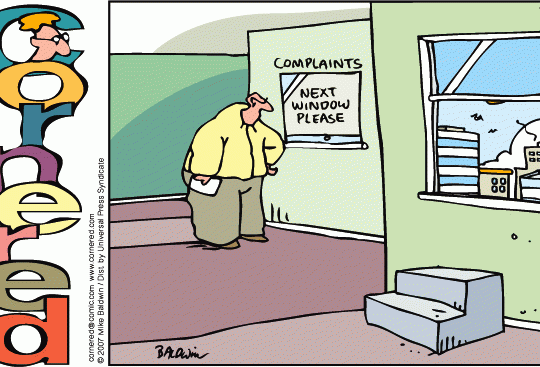
Surveys are employed to achieve a number of outcomes; primarily they are an important feedback loop that formalises somewhat your performance against customer expectations. It is by no means the only feedback look but is it generally considered the most formal and measurable of the available feedback mechanisms.
Another secondary use of surveys is as an education tool for your customers. A survey format can easily be used to embed (and therefore educate by association) goods and services that your customers did not know existed.
If a new product line was introduced a short time ago, and there was associated marketing material that followed the product launch, but sales have been less than stellar or have fallen well below expectations, then a survey to existing and potential new customers can determine the reason for failure as well as (in this case) informing your customers that the product exists. Often a dismal product launch or a product that fails to meet sales targets is as a result of ineffective marketing at the time of launch. By incorporating a question, such as, Do you prefer the product in pastel or industrial colours is enough to inform your customers that the product exists, and this frequently results in an increase of sales.
This is a proven technique and has been used (sparingly) for a considerable length of time. Many surveys are customer experience centric, and this is fine if the main aim of the survey is to understand these metrics; however, by incorporating a product related question into the survey not only informs your customers that the product in fact actually exists, but that they are important enough to provide input into the product performance/style/etc. You have given your customers some product ownership whilst educating them on the product existence.
Your survey content needs to be considered; the questions should not be open to interpretation, and the answers provide should be unambiguous. It might be worthwhile actually dumbing down your questions so that your questions are definitive in nature which will result in your answers being measurable and relevant. Avoid personal questions – you really don’t need to know what the household income is (that just puts people off side), but you may need to know the household structure (1 parent, 2 teenage kids).
Once the primary and secondary aims of the survey have been established, the next hurdle is to determine the most effective delivery method. Important points to consider is the collation of the data and the interpretation of the data results. The immediate question here is: Online or Paper-based survey? Hmmm, this really depends on a number of factors; How tech savvy are the intended survey recipients?; Who will analyse the results?; How are the results to be interpreted? Unless you are planning to receive thousands of survey returns, then most of the data analysis and interpretation can be done in-house. Certainly online surveys delivered via email of via your facebook page will make it easier to interpret the data, but this is only if your customers are electronically connected to you. Paper-based surveys will certainly generate additional data analysis and interpretation headaches, but, depending on your customer demographics, may be the preferred participation method. The other option is to run both formats.
Finally, we come to the question of rewarding your survey participants. The data you are collecting is valuable. Your survey participant’s time is also valuable. The fact of the matter here is that many surveys attract a reward of some kind. The best part about an in-house survey is that the reward can be used as a marketing tool. Many third party survey companies pay participants a token amount for a completed survey. It is usually in the region of $0.20 or so. Offering $0.20 to your survey participants is frankly insulting and cannot be used as a marketing tool. Instead consider an instore reward – something like 5% off the next purchase or similar. This will achieve 2 important outcomes: 1 It will reward your customers with something that is tangible, thereby increasing the number of survey results that are returned, and 2 It will automatically generate repeat business because they need to return to the store to claim the reward.
Postscript:
- All survey data is valuable, however, if you usually turn through 1000 customers per week and you receive 20 survey responses, then I’d suggest that the data has a diminished value because of the small sample size, and that your survey was either badly delivered, worded, or your reward was pathetic. Return to the drawing board and start again.
- Publish your survey results, especially if they were positive. But importantly, it is just as important not to shirk away from the negatives, instead acknowledge them and promote what you are doing to improve things. Your customers will appreciate that you have listened to them.
Remember, it is great to get a pat on the back for good work, but negative feedback is gold and an immediate improvement metric that you can act upon.






